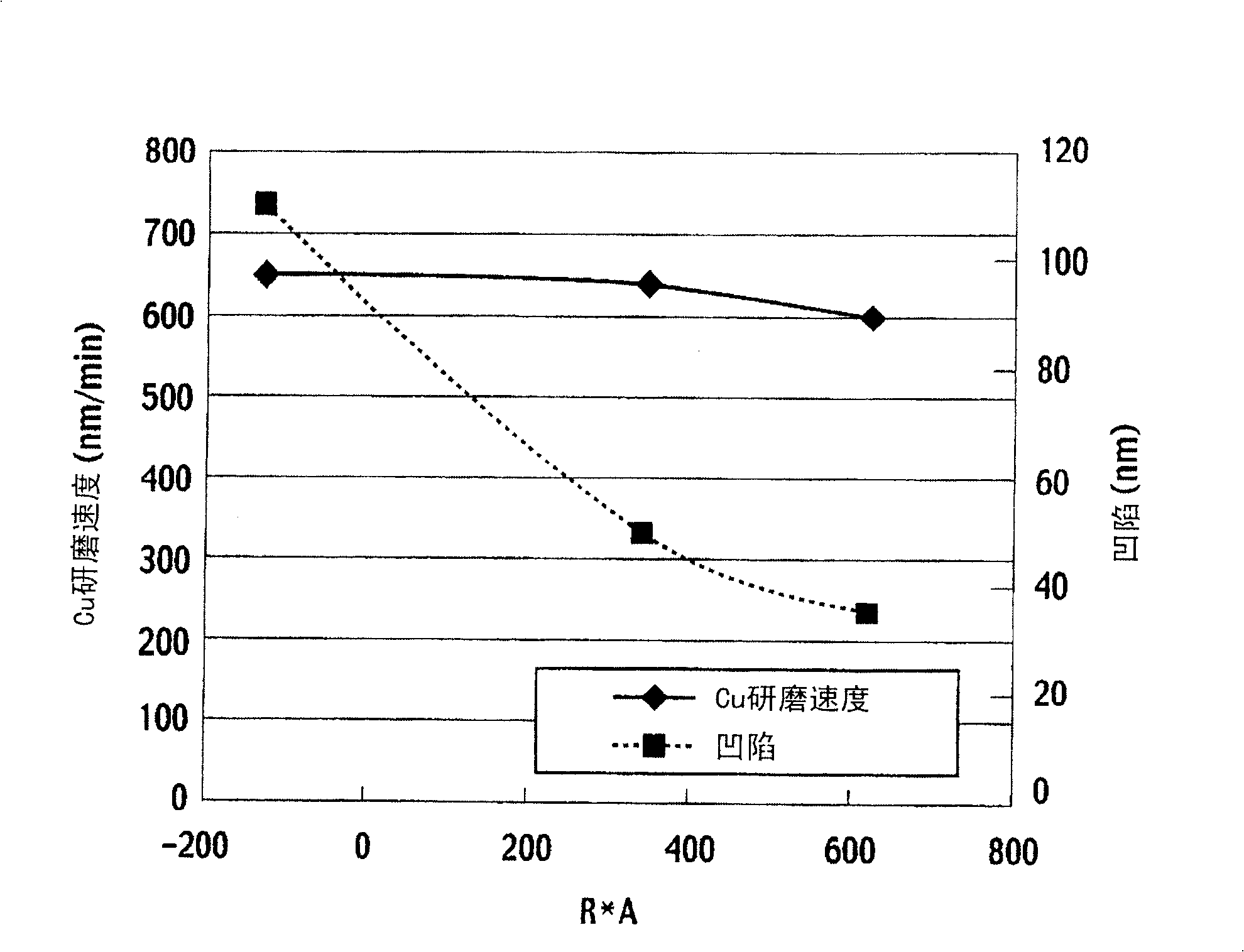Metal polishing liquid and polishing method using it
A technology of grinding liquid and metal, which is applied in the direction of grinding equipment, grinding machine tools, metal processing equipment, etc., can solve problems such as difficulties, and achieve the effect of reducing grinding particles and high flatness
- Summary
- Abstract
- Description
- Claims
- Application Information
AI Technical Summary
Problems solved by technology
Method used
Image
Examples
Embodiment 1~4 and comparative example 1
[0060] (Examples 1-4 and Comparative Example 1: Polishing liquid 1 for metal)
[0061] The metal grinding liquid 1 that uses is to contain the organic acid (oxidized metal dissolving agent) below 1 mass %, the nitrogen-containing cyclic compound (metal anticorrosion agent) below 0.5 mass %, the water-soluble macromolecular ( additive), hydrogen peroxide (oxidizing agent) and water at 10% by mass or less. In addition, the primary particle diameter is within the range of ±10% of the average value described in Table 1, and the secondary particle diameter is within the range of ±15% of the average value described in Table 1, and the surface potentials described in Table 1 are different. Abrasive particles are added to the metal abrasive liquid 1 .
[0062] In Examples 1 to 4 and Comparative Example 1, CMP was performed on the substrate to be polished under the following polishing conditions using the above-mentioned metal polishing solution 1 to which abrasive particles having di...
Embodiment 5 and comparative example 2
[0063] (Example 5 and Comparative Example 2: Polishing liquid 2 for metal)
[0064]The metal grinding liquid 2 that uses is to contain the following 0.5 mass % oxide metal dissolving agent, the nitrogen-containing cyclic compound (metal corrosion inhibitor) below 0.3 mass %, the water-soluble macromolecule (additive) below 0.5 mass %, 10 Mass % or less hydrogen peroxide (oxidizing agent) and water. In addition, the primary particle diameter is within the range of ±10% of the average value described in Table 1, and the secondary particle diameter is within the range of ±15% of the average value described in Table 1, and the surface potentials described in Table 1 are different. Grinding particles are added to the metal grinding liquid 2 .
[0065] In Example 5 and Comparative Example 2, CMP was performed under the following polishing conditions using the aforementioned metal polishing solution 2 to which abrasive particles having different surface potentials were added.
Embodiment 6 and comparative example 3
[0066] (Example 6 and Comparative Example 3: Polishing liquid 3 for metal)
[0067] The metal polishing solution 3 used contains not more than 1% by mass of an organic acid (a metal oxide dissolver), not more than 2% by mass of a water-soluble polymer (additive), not more than 10% by mass of hydrogen peroxide (an oxidizing agent) and water. In addition, the primary particle diameter is the average ± 10% of the average value recorded in Table 1, the secondary particle diameter is within the range of the average ± 15% of the average value recorded in Table 1, and abrasive particles with different surface potentials are added to the above-mentioned abrasive particles. In the metal grinding liquid 3 mentioned above.
[0068] In Example 6 and Comparative Example 3, CMP was performed on the substrate to be polished under the following polishing conditions using the above-mentioned metal polishing liquid 3 to which the polishing particles described in Table 1 having different surface...
PUM
 Login to view more
Login to view more Abstract
Description
Claims
Application Information
 Login to view more
Login to view more - R&D Engineer
- R&D Manager
- IP Professional
- Industry Leading Data Capabilities
- Powerful AI technology
- Patent DNA Extraction
Browse by: Latest US Patents, China's latest patents, Technical Efficacy Thesaurus, Application Domain, Technology Topic.
© 2024 PatSnap. All rights reserved.Legal|Privacy policy|Modern Slavery Act Transparency Statement|Sitemap

